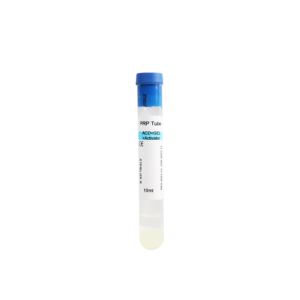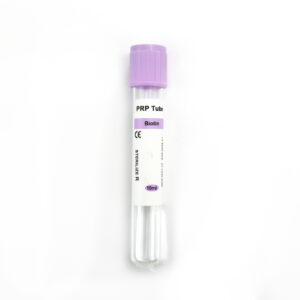Is PRP a Lifetime Treatment? Platelet-Rich Plasma (PRP) has become a mainstream option for hair restoration, orthopedics, sports medicine, and aesthetic rejuvenation—but is PRP a Lifetime Treatment? The short, evidence-based answer is: no — PRP is not universally a one-time, lifetime cure. Its benefits can be substantial and long-lasting for many patients. Still, durability depends on the condition being treated, the patient’s biology, the treatment protocol, and—critically—the quality of the PRP product and the system used. Clinical summaries consistently report that PRP results are generally measurable for months to a few years and often require maintenance to sustain gains.
Understanding the question: “Is PRP a Lifetime Treatment?”
When people ask Is PRP a Lifetime Treatment?, they’re really asking whether a single course of PRP permanently corrects the underlying problem (hair loss, osteoarthritis, tendon injury, skin aging). Across clinical reviews, the pattern is clear:
- PRP stimulates tissue repair by delivering concentrated growth factors and cytokines from the patient’s own blood.
- For musculoskeletal injuries and joint pain, symptom relief often lasts months and sometimes more than a year, but typically is not permanent — repeat injections may be advised.
- For hair restoration, studies show improvements in hair density and thickness, but maintenance sessions are usually required because the genetic and hormonal causes of hair loss persist.
In short: PRP is best understood as a regenerative therapy that can offer long-lasting improvement — sometimes up to 12–24 months or longer — but is rarely a once-and-for-all, “lifetime” solution.
What determines how long PRP lasts?
Several factors influence how long PRP benefits persist:
1. Treated condition and tissue type
Tendons heal differently from joints or hair follicles. Scalp treatments may take longer to show results but often have sustained effects, while joint treatments may give faster relief with variable duration.
2. Individual biology
Age, overall health, metabolic issues, smoking, medications, and platelet quality all influence PRP effectiveness. Biological variability means some patients naturally respond better.
3. PRP preparation and product quality
This is one of the biggest variables in outcome consistency. Platelet concentration, leukocyte composition, sterility, and the use of a closed vs. open preparation system directly impact treatment results. Reliable kits with validated protocols produce far more predictable outcomes.
4. Treatment protocol and maintenance
Standard hair protocols often include 3 initial sessions over 4–6 weeks, followed by maintenance every 6–12 months. Orthopedic conditions may begin with 1–3 injections, then boosters if symptoms recur.
Because of these factors, clinicians often advise that PRP can provide durable results, but maintenance treatments are a key part of long-term success.
Why PRP systems and suppliers matter — how product quality shapes outcomes
Not all PRP kits or collection tubes are equal. Product variability is one of the most overlooked causes of inconsistent patient results. Key differences include:
- Consistency of platelet yield: Reliable kits deliver predictable platelet concentrations (often 3–6× baseline).
- Closed system design: Closed, sterile PRP systems reduce contamination and ensure more consistent output, while open protocols introduce unnecessary variability.
- Leukocyte content: Different indications benefit from different formulations. Clinicians may choose leukocyte-poor PRP to reduce inflammation for some uses, whereas they may prefer leukocyte-rich PRP for others.
- Regulatory quality & validation: Kits with CE or ISO certification and published performance data offer confidence in reproducibility and sterility.
Choosing a reputable supplier ensures consistency, safety, workflow efficiency, and reliable long-term patient outcomes. When comparing products, prioritize those with clear platelet recovery data, sterility certifications, and well-documented protocols.
If you need to evaluate clinically validated PRP tools, you can visit Siny PRP’s product page or contact Siny PRP for technical specifications and data sheets.
How PRP products are used: a step-by-step clinical workflow
A standardized procedure produces safer, more predictable results. A typical PRP workflow includes:
1. Evaluation and consent
Assess the patient’s condition, medical history, medications, and contraindications. Establish realistic expectations.
2. Blood collection
Blood is drawn into specialized PRP tubes containing an anticoagulant.
3. Centrifugation
The tubes are placed into a compatible centrifuge using the manufacturer’s recommended speed and time settings. Closed systems minimize contamination risk and improve consistency.
4. PRP extraction & activation
The platelet-rich layer is isolated. Some clinicians activate platelets with calcium or other agents depending on the indication.
5. Injection or application
Clinicians inject PRP into the scalp, joint, tendon, or facial tissues, or apply it topically after microneedling for skin treatments.
6. Aftercare & maintenance plan
Patients receive post-treatment instructions and a recommended maintenance schedule.
Clinics benefit from using PRP kits with clear instructions, sterility assurance, and validated centrifuge parameters.
For product comparisons and clinician resources, you can explore Siny PRP’s product options or contact Siny PRP for support.
Clinical applications: where PRP works best and realistic outcome expectations
PRP is widely used across several specialties. Evidence varies by indication:
Hair Restoration
PRP can improve hair density, reduce shedding, and enhance follicle vitality. Most patients begin noticing changes after 3–6 months. Maintenance is usually needed yearly.
Osteoarthritis & Joint Pain
PRP can reduce pain and improve function for many patients with mild-to-moderate osteoarthritis. Results often last many months, with boosters as needed.
Tendon & Soft-Tissue Injuries
PRP is widely used for chronic tendinopathies and can accelerate tissue repair.
Aesthetic Medicine
When combined with microneedling, PRP supports collagen production, improving skin texture, scars, and overall complexion.
Across all indications, transparency about expected timelines, outcomes, and maintenance helps ensure patient satisfaction.
Choosing a PRP supplier: a practical buying checklist
For clinics and procurement teams, selecting a quality PRP product is crucial. Use this checklist:
- Clear platelet concentration data
- Sterile, closed-system design
- Regulatory approvals (CE, ISO, GMP)
- Compatibility with standard centrifuges or the included device
- Transparent usage instructions and validated protocols
- Reliable technical support and training
- Good cost-performance balance for high-volume use
Selecting a clinically validated PRP supplier improves safety, reduces procedural errors, and ensures repeatable outcomes.
For detailed product specifications and comparison charts, you can view Siny PRP’s product information or contact Siny PRP for onboarding resources.
Safety considerations and contraindications
PRP is generally very safe because it uses autologous blood, but clinicians must still follow protocols carefully.
- Common transient effects: pain at the injection site, swelling, transient headache, localized bruising.
- Infection risk: rare if aseptic technique and closed systems are used; notable outbreaks have been linked to improper practices in the past. Choose sterile supplies and certified training.
- Contraindications: active infection at the treatment site, certain blood disorders, use of anticoagulants (case-by-case), and some platelet function disorders. Pre-treatment screening is essential.
A validated product and trained clinicians minimize risk—another reason supplier selection is material to patient safety.
FAQs
Q1: Is PRP permanent for hair loss?
PRP provides long-lasting improvement but is not permanent. Maintenance every 6–12 months is common.
Q2: How often will I need PRP boosters?
Most patients benefit from yearly maintenance, though the exact frequency depends on the condition treated.
Q3: Can one PRP kit treat multiple conditions?
Some kits are adaptable, but you should always follow the indication-specific instructions.
Q4: What makes a PRP product high-quality?
Consistent platelet yield, sterility, closed systems, and regulatory certifications are key indicators.
Q5: Are there long-term safety issues?
Clinicians minimize long-term risks when they use proper sterile technique and validated PRP products.
Summary
So, Is PRP a Lifetime Treatment? The realistic answer is that PRP is long-lasting but not lifelong. Its benefits often persist for many months or years, but maintenance is a normal and expected part of care. Most importantly, the quality of the PRP system determines how consistently your clinic can deliver strong results.
For clinics evaluating PRP solutions or comparing supplier quality, you can explore Siny PRP’s validated product line or contact Siny PRP directly for technical specifications and professional support.





